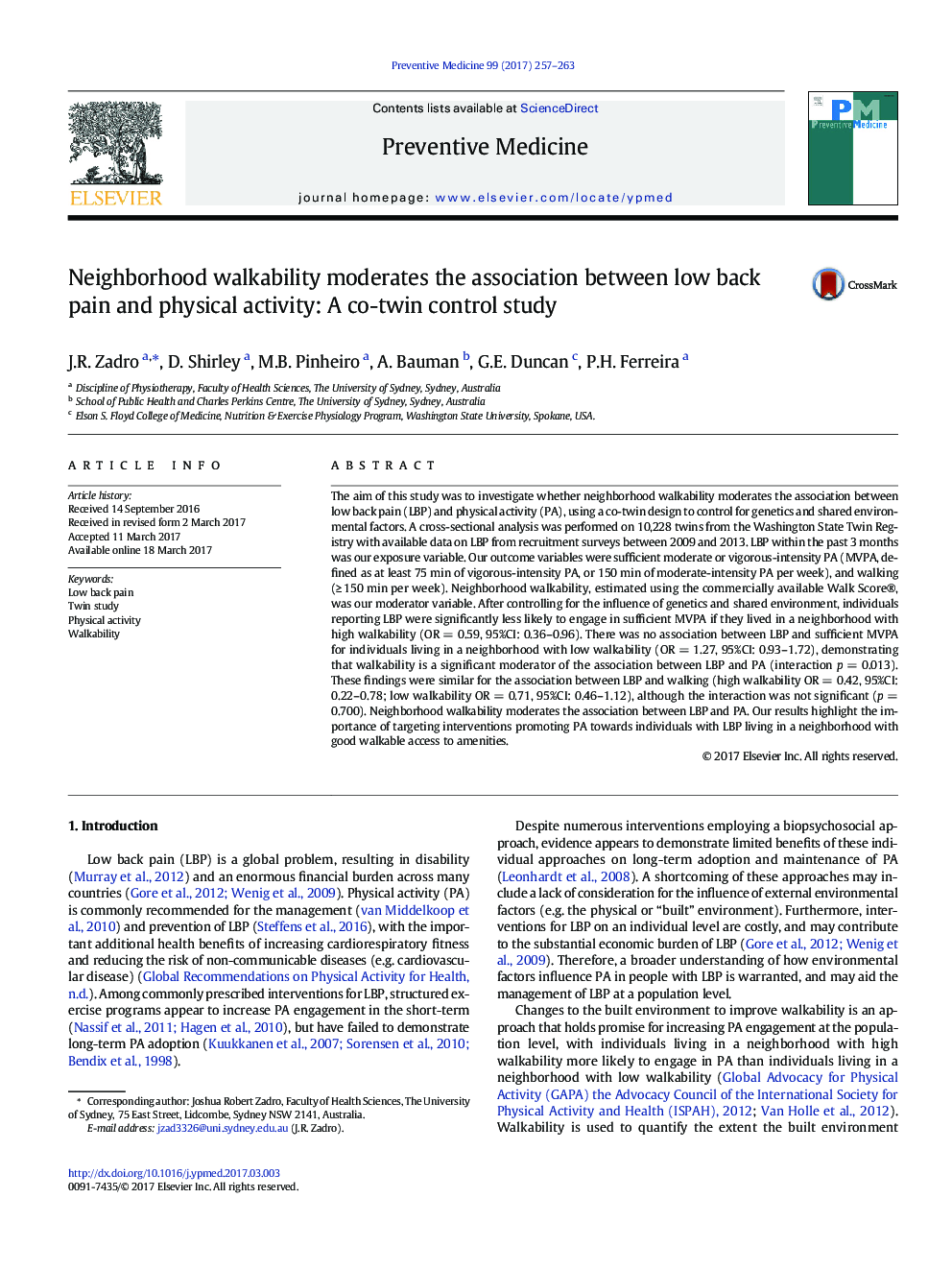| کد مقاله | کد نشریه | سال انتشار | مقاله انگلیسی | نسخه تمام متن |
|---|---|---|---|---|
| 5635682 | 1581615 | 2017 | 7 صفحه PDF | دانلود رایگان |
- Walkability moderates the association between low back pain and physical activity.
- Genetics and shared environmental factors do not appear to affect this relationship.
- People with low back pain are less likely to benefit from a walkable environment.
The aim of this study was to investigate whether neighborhood walkability moderates the association between low back pain (LBP) and physical activity (PA), using a co-twin design to control for genetics and shared environmental factors. A cross-sectional analysis was performed on 10,228 twins from the Washington State Twin Registry with available data on LBP from recruitment surveys between 2009 and 2013. LBP within the past 3 months was our exposure variable. Our outcome variables were sufficient moderate or vigorous-intensity PA (MVPA, defined as at least 75 min of vigorous-intensity PA, or 150 min of moderate-intensity PA per week), and walking (â¥Â 150 min per week). Neighborhood walkability, estimated using the commercially available Walk Score®, was our moderator variable. After controlling for the influence of genetics and shared environment, individuals reporting LBP were significantly less likely to engage in sufficient MVPA if they lived in a neighborhood with high walkability (OR = 0.59, 95%CI: 0.36-0.96). There was no association between LBP and sufficient MVPA for individuals living in a neighborhood with low walkability (OR = 1.27, 95%CI: 0.93-1.72), demonstrating that walkability is a significant moderator of the association between LBP and PA (interaction p = 0.013). These findings were similar for the association between LBP and walking (high walkability OR = 0.42, 95%CI: 0.22-0.78; low walkability OR = 0.71, 95%CI: 0.46-1.12), although the interaction was not significant (p = 0.700). Neighborhood walkability moderates the association between LBP and PA. Our results highlight the importance of targeting interventions promoting PA towards individuals with LBP living in a neighborhood with good walkable access to amenities.
Journal: Preventive Medicine - Volume 99, June 2017, Pages 257-263
